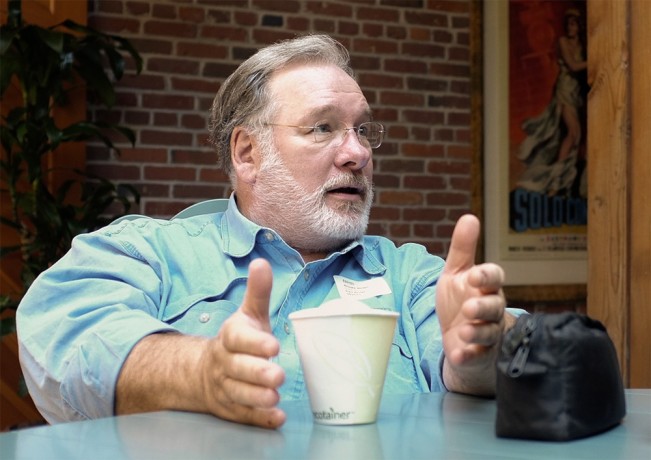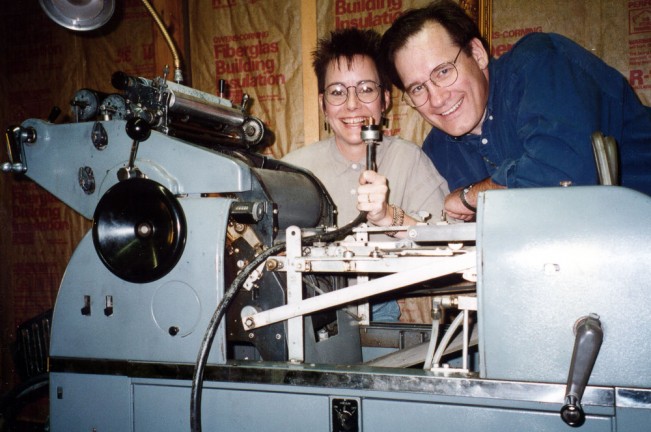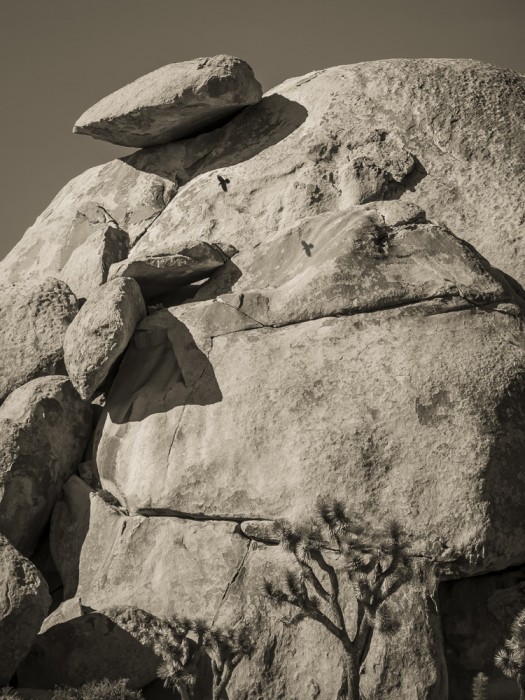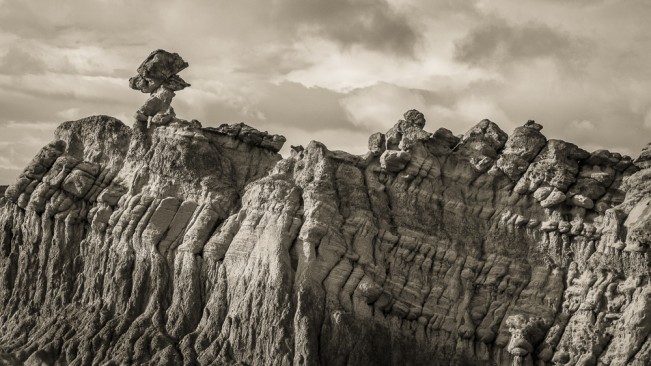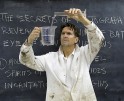The Brooks Jensen Mixtape
Good art is rarely made by dolts who are disorganized, numb, or unthinking. The mad genius is a popular myth in art circles, but more often than not the best artists are the ones who work the hardest for the longest time, pushing themselves and their craft with diligence and dedication. No one ever talks about the “instantaneously successful” or “lucky” violinist — and to think this can be true about photographers is a delusion. – Brooks Jensen
I met Brooks Jensen a number of years ago at the Photolucida Portfolio Reviews with my portfolio box in hand. He came with his wife, Maureen Gallagher, and I was pretty sure that he would be a tough reviewer. I was a long time fan of his magazine, LensWork and was well aware that each issue was printed to perfection and presented with intelligence and elegance. I had also been inspired by his podcasts and knew he had a big footprint in the photo world. And yes, he was tough, but he was also warm, insightful, and encouraging and was a provocateur and a teacher in the very best way. He had an ability to look at work with a rich and knowledgeable perspective, but remain open to new ways to seeing and thinking. He asked me a lot questions that signaled he was deeply inquisitive and profoundly interested in all things photographic.
Brooks has created a legacy that extends into so many realms, and what I so appreciate is his commitment to excellence in all that he creates. Brooks is a fine-art photographer, publisher, workshop teacher, and writer. In his personal work, he specializes in small prints as well as hand-made artist’s books. He and his wife (Maureen Gallagher) are the owners, co-founders, editors, and publishers of the award winning LensWork, one of today’s most respected and important periodicals in fine art photography. With subscribers in 73 countries, Brooks’ impact on fine art photography is truly world-wide. His podcasts on art and photography are heard over the Internet by thousands every day. LensWork Publishing is also at the leading edge in multimedia and digital media publishing with LensWork Extended — a PDF based, media-rich expanded version of the magazine. Brooks is the author of six best-selling books about photogra-phy and creativity: Letting Go of the Camera (2004), The Creative Life in Photography (2013), Single Exposures (4 books in a series, random observations on art, photography and creativity) as well as a photography monograph of his work, Made of Steel (2012). His next book will be released in November 2013 — Those Who Inspire Me (And Why).
I am very excited that LensWork is returning to the newsstands, after a period of being solely subscription based. It gives me incredible pleasure to introduce The Brooks Jensen Mixtape!
Tell us about your growing up and what brought you to photography.
In high school biology, I was doing a project with protozoa. I needed to photograph them through the microscope, so I took a photography class. There, I was assigned a book report and stumbled across a Wynn Bullock monograph at the library. I was hooked by those Bullock images, and from there discovered Weston, Strand, Adams, Evans, et al. Protozoa wiggles were not nearly so interesting as abstracts by Minor White. Today I still photograph and am a publisher, but pond water has faded to a distant, scummy memory.
What is your title and job description and tell us about a typical day?
I’m the editor of LensWork. Typical day? Not sure there is one. I guess I’m involved in photography all day, every day, 10-12 hours a day, often seven days a week — ah, the life of an entrepreneur! What I do is, well, a lengthy list: editing, publishing, interviewing photographers, working on my own artwork, adding content to LensWork Daily (our blog site), podcasting, press checks, developing our new monographs, working with photographers to make sure they are happy with the way we reproduce their images, calibrating monitors/duotones/press sheets/proofs, printing LensWork Special Editions Folios, audio and video editing and production, recording our video workshops, answering emails, doing submissions reviews, looking at photograph books. Come to think of it, perhaps a better answer is looking at photography, thinking about photography, doing photography, publishing photography, and all the organizational stuff that makes that possible. Writing the above makes me think I need to get a life outside of photography, but I’m not sure that know what that is.
What are some of your proudest achievements?
· Publishing LensWork for 20 years now. The consistent print quality of LensWork. I shouldn’t confess this, but I do find a secret joy every time a photographer we’ve published tells us that our reproductions in LensWork are better than their museum-quality, hardbound book. We hear this with regularity. Best if I don’t name names.
· I’m also enormously proud of our digital version, LensWork Extended. I remember those very early digital days in the late 1990s when we had to spend so much time on the phone explaining to people what a PDF was and how to view it on their computer. My, how times have changed! I am no doubt biased, but LensWork Extended looks fantastic on iPads and other tablet devices.
· I’ve now done over 800 podcasts on photography and the creative process. I started doing “audio blogs” about six months before Apple introduced to the world a new thing they called podcasting along with their first iPod. I guess I’ve been podcasting before podcasting was podcasting.
· I’m both proud and surprised that so many photographers have found the “folio” concept to be such a valuable tool for their creative expression. When I developed the folios concept back in the early 1990s for my own work, I had no idea I was pioneering something that would become so widespread. It’s a joy every time I see one.
· Every writer knows the solitude of pecking away at the keyboard trying to say something meaningful. We then send it out into the world and move on to the next piece, often without any feedback or echo that tells us we’ve made a difference. Then, often when discouragement mounts to oppressive levels, I’ll receive an email from some photographer who writes about how my articles or books have helped them in their creative process. When I’m long retired and past my career as a publisher, it is that file of mementoes and thank you’s that will brighten my cloudy days.
What do you look for when attending a portfolio review?
Good work. Then I look for good work. Then I top it off by looking for good work.
Curiously enough, that is often found when I find good people — or I should say, inquisitive, bold, daring, observant, sensitive, thinking, and fearless people. Good art is rarely made by dolts who are disorganized, numb, or unthinking. The mad genius is a popular myth in art circles, but more often than not the best artists are the ones who work the hardest for the longest time, pushing themselves and their craft with diligence and dedication. No one ever talks about the “instantaneously successful” or “lucky” violinist — and to think this can be true about photographers is a delusion.
Talent. Artwork is the expression of a soul — something every one of us has. However, not every voice can make wonderful music, as my gravely baritone would prove.
An energetic work ethic. As cliché as it sounds, at the bottom of every ladder of success is a crowd of people who lack the energy or ambition to climb.
I seek out those who have the most failures. They are inevitably the photographers with the best work. Another cliché, but even those who fall flat on their face are at least moving forward. Never underestimate the value of the learning curve.

Any advice for photographers coming to a review event?
Before the event: Know your goals. Quantify them. Organize your presentation and practice it. Then practice it some more so that it is smooth, second nature, efficient, and concise.
At the event: Listen. Shut up. Record the comments of the reviewer so you can review them in the subsequent weeks and months. Prioritize reviewers and see the most important ones, if you can. Beyond that, show your work to as many people as you can. And listen.
After the event: Understand that you will hear hundreds of comments about your work — good and bad. Do not be thin-skinned or defensive. Allow all comments to simmer for a few weeks — or months — before you react too decisively. Remember that everything you heard was just an opinion. Remember that everything you heard was someone trying to help you. Follow up with all the leads you gathered during the event. No one will call you; the ball is in your court.

What is something unexpected that we don’t know about you?
In the early days of LensWork, we bought a small duplicator press and printed LensWork issues #5-11 in our garage. I learned how to run the press from the Navy Lithographer’s Manual, published in the 1940s by the War Department. It was a great foundation for learning skills about ink and paper that have served us well even to this day, during our bimonthly press checks.
I speak a little Japanese, cook a mean pot roast, owned an 8×10 camera once for 48 hours, have two daughters and three grandchildren, none of whom are the least bit interested in photography. I am known as Grandpa Apple. My 5-year-old grandson did once announced to his mother, “When I grow up, I want to be a ‘tographer.” She replied, “That’s sweet, honey. Like Grandpa Apple?” He responded, “No, like Peter Parker!” He’s a big Spiderman fan.
And since it’s a Mixtape, what is your favorite song, band, and do you dance?
Jethro Tull, Nancy Wilson, Mozart, Sting, Supertramp, Joni Mitchell, Miles Davis, Johnny Hodges — in fact, everything Big Band. My wife thinks I’m a pretty good dancer in spite of my 26″ inseam. But then, she’s biased.
And now we turn over the Mixtape for some extended play by Brooks Jensen who shares a new body of work:
Suspended without wings
When I was a boy, no doubt influenced by the superheroes of my boyish fictions, I dreamt of flying. I remember quite clearly an afternoon one mid-summer day when I tied one of my mother’s dish towels around my neck to form a cape. So prepared, I leapt off the backyard deck with arms outstretched into the grassy lawn below, over and over again, thinking, feeling, believing that if I willed it with sufficient ardor that I might fly, that I would fly if only my faith was sufficient. It was a difficult lesson for a young boy to learn; that the immutable laws of physics — gravity — could not be overcome by even the most fervent dreams and wishes of fanciful youth. I know, there are balloons and airplanes and helicopters — but I wanted wings.
In my youth, gravity was something to conquer. As I matured, it was something to resist. Now I am beginning to re-alise that gravity is something to endure. The pull of gravity is strong, never wavering, never ceasing. The descent may be postponed, but eventually gravity wins. Gravity always wins. Gravity always, always, always, always wins. But maybe not today, not now, not this instant, but always, eventually. As I found in my youth, I may not be able to fly, but I can leap, and for a moment become airborne — and in that moment find hope. Even gravity can be sus-pended.
Whenever I see a ton or more of rocky earth suspended in mid-descent, I can’t help but wonder how long it’s been poised like that, or how long it will remain so. I know the pause is temporary — as is life — but wondrous while it lasts. There it is — the balance of a dancer, the strength of a giant — waiting, waiting, waiting — suspended without wings.
Posts on Lenscratch may not be reproduced without the permission of the Lenscratch staff and the photographer.
Recommended
-
The Christy Karpinski MixtapeDecember 2nd, 2023
-
The Rotem Rozental MixtapeJanuary 27th, 2023
-
The Brian Taylor MixtapeJune 14th, 2019
-
The David Rosenberg MixtapeMay 3rd, 2019
-
The Jonathan Blaustein MixtapeJuly 20th, 2018

